The classic baking soda volcano experiment has been entertaining kids (and adults) of all ages for decades. But it’s more than just a lot of fun. This experiment also teaches kids about simple chemical reactions and physical properties. The best part? It’s easy to do and uses only a few basic ingredients. Read on to see how to conduct the baking soda volcano experiment, and fill out the form on this page to grab your free recording sheet!
How does the baking soda volcano experiment work?
This experiment involves pouring vinegar mixed with dish soap into a small amount of baking soda. The baking soda acts as a base while the vinegar is an acid. When the base and the acid come together, they create an endothermic reaction that produces carbon dioxide. The dish soap helps to create the foaming effect as the “lava” pours out of the volcano.
What does the baking soda volcano teach?
The baking soda volcano experiment is a great way to demonstrate a chemical reaction between an acid and a carbonate. When the carbonate (found in the baking soda) is exposed to the acids (found in the vinegar), it creates a decomposition reaction that releases carbon dioxide as gas. While this experiment is an example of an acid-base reaction, it’s also a great simulation of a real volcanic eruption.
Is there a baking soda volcano video?
This video shows how to make a volcano erupt using ingredients you can probably find in your kitchen.
Materials needed
To do the baking soda volcano experiment, you will need:
Our free recording sheet is also helpful—fill out the form on this page to grab it.
Baking soda volcano experiment steps:
1. To start, place a tiny paper cup into the hole at the top of the plastic volcano mold.
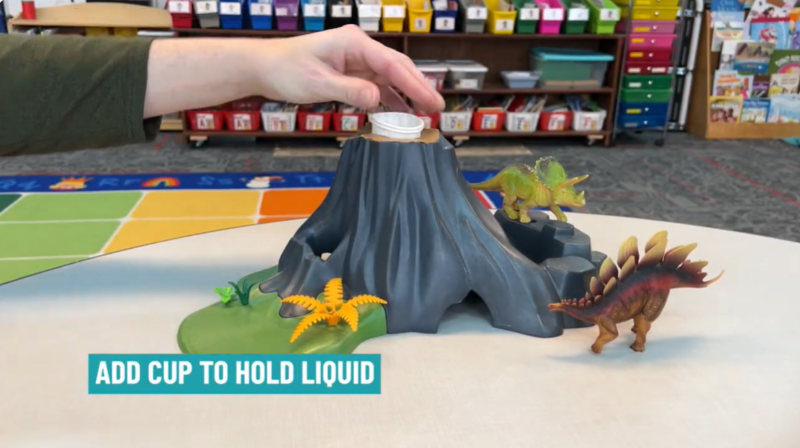
2. Once your volcano is set up, pour 1 to 2 teaspoons of baking soda into the paper cup.
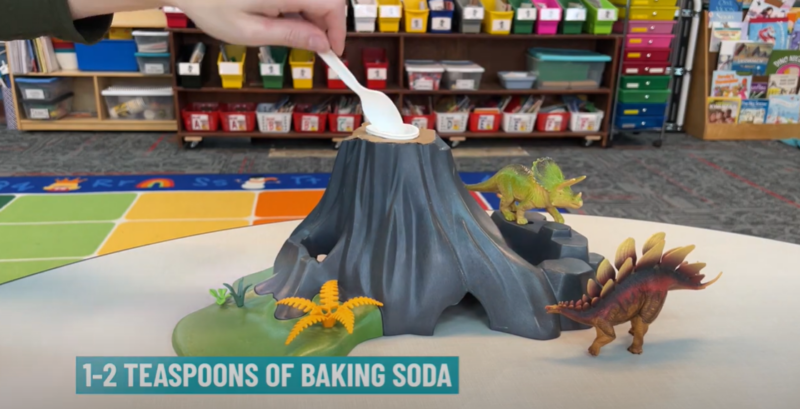
3. Next, add about a half cup of vinegar into a plastic measuring cup.
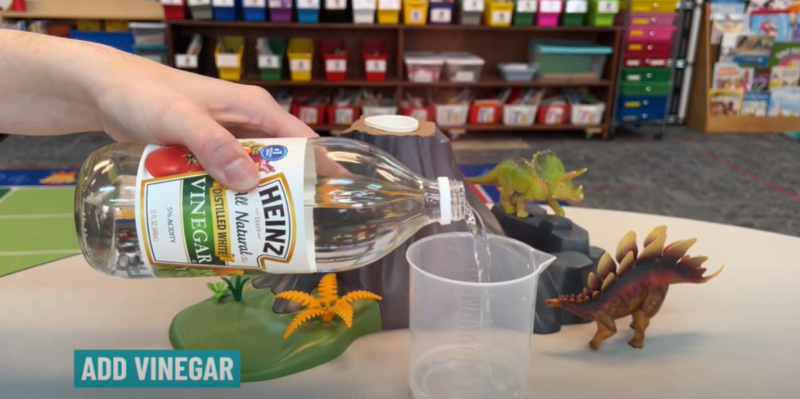
4. Add a few squirts of dish soap to the vinegar solution.
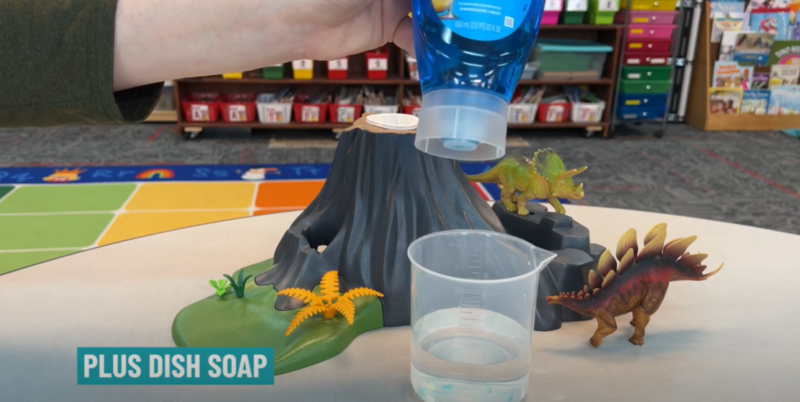
5. Add some squirts of red and yellow food coloring to the vinegar mixture.
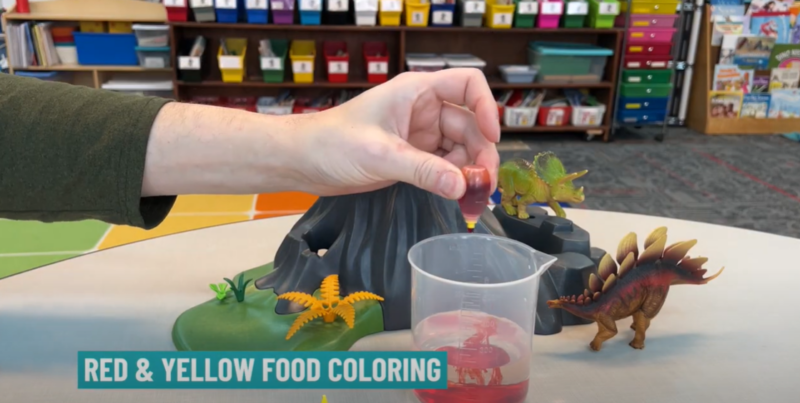
6. Use a plastic spoon to mix all the ingredients in the plastic measuring cup together.
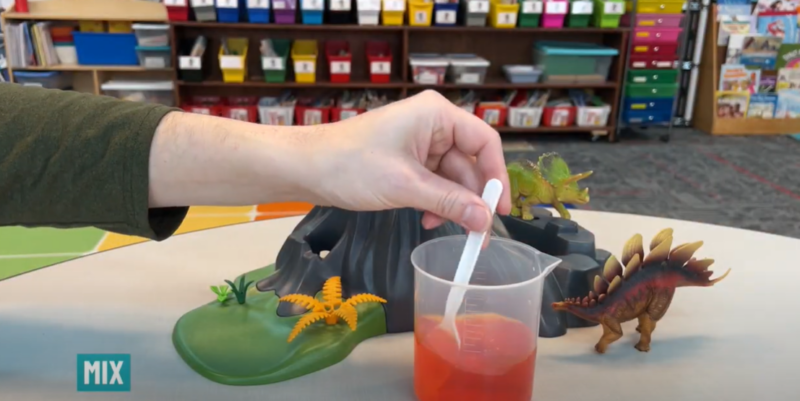
7. Pour the vinegar solution into the small paper cup at the top of the volcano.
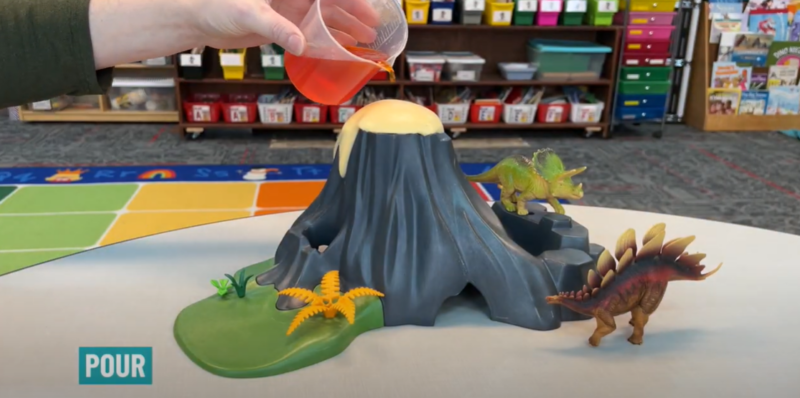
8. Finally, watch and enjoy the eruption!
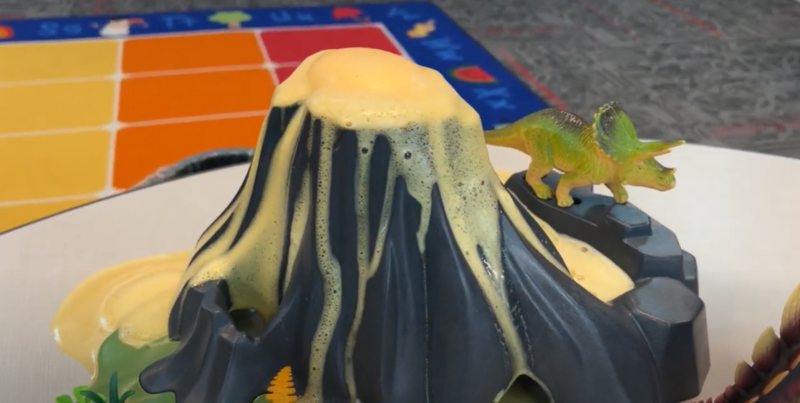
Grab our free baking soda volcano experiment worksheet
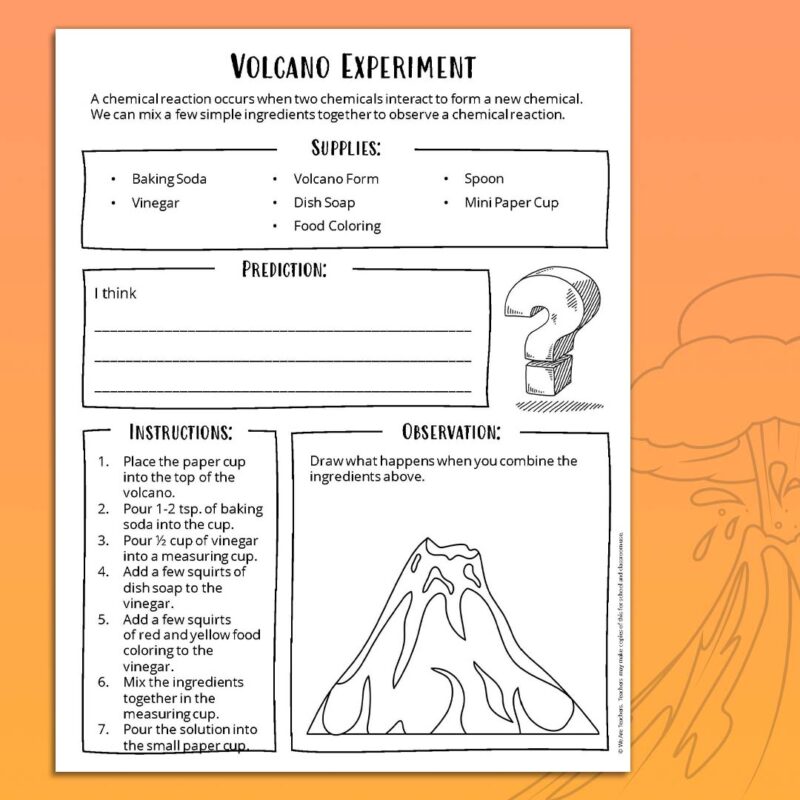
Fill out the form on this page to get your free worksheet. The worksheet asks kids to guess the correct order of the steps in the experiment. Next, kids must make a prediction about what they think will happen. They can use the provided spaces to draw what happens before and after they add the ingredients. Did their predictions come true?
Additional reflection questions
- What role does the dish soap play in the reaction that occurs?
- How would it be different if you added baking soda to the vinegar instead of the other way around?
- What do you think would happen if you added a different liquid than vinegar?
- What do you think would happen if you added more baking soda?
Can the baking soda volcano experiment be done for a science fair?
Yes! If you want to do this experiment for a science fair, we recommend switching up some of the variables. For example: Does the amount of baking soda matter? Does the type of dish soap? Form a hypothesis about how changing the variables will impact the experiment. Good luck!

